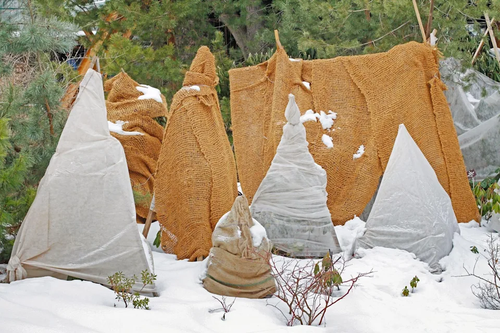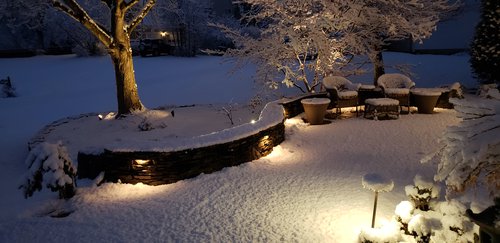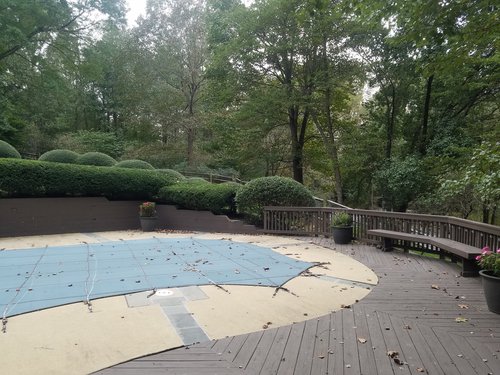
How to Winterize Your Landscape
Winter is coming...
Your landscaping has flourished all year long — from springtime blooms to summer shade to colorful fall foliage — enhancing your home’s appearance and creating inviting spaces to entertain. Believe it or not, it's already time to start planning for winter (it always sneaks up on us, doesn't it?). That means taking the steps to protect your investment by winterizing your landscaping.
Partnering with a landscape company that offers garden maintenance services ensures your outdoor ecosystem is healthy and looks beautiful at all times. When it comes to protecting your plants all winter long, consider the following services and tips.

Preparing Plants for Winter
Working with a landscaper that favors native and other well-adapted plants minimizes the care needed to keep your landscape healthy over the winter. However, evergreen shrubs and trees do need protection, particularly if they were recently planted or would be expensive to replace.
Breathable fabrics made of natural materials like cotton, linen or burlap are ideal for covering evergreens. These fabrics allow moisture to escape while still protecting plants from inclement weather by preventing the freezing air from coming in direct contact with the moisture under the fabric and on the plants themselves.
Another option is to spray plants with an anti-desiccant to keep branches from breaking due to the weight of snow or ice, or from drying out in harsh winter winds.
Lawns should be fertilized with a winterizer fertilizer, raked free of debris and cut lower than usual to prevent fungal diseases.

Protecting Structures and Surfaces
Care also should be taken to ensure decks, arbors, pathways and patios are protected for the winter months.
Since wood absorbs water, keeping all wooden landscape structures painted or sealed will extend their life and ensure the safety of any wood walking surfaces.
It’s also important to fill cracks in asphalt and seal pavers, stone or concrete to protect these surfaces from the freeze/thaw cycle, as well as from any deicing products that will be used during winter months.

Winterizing Water Features
Fall is the time to have your landscaper blow out your irrigation system. Using an air compressor to get all of the water out of irrigation pipes prevents damage to the pipes and the moving parts of the system.
Water features must be winterized, as well. It’s recommended to partially drain above-ground ponds and pools to avoid damage that can occur due to freeze/thaw cycles.
Outdoor Lighting Winter Maintenance
Winter can wreak havoc on outdoor lighting, but a few preventive maintenance measures can protect your system from costly damage.
Remove fallen leaves from fixtures to keep all areas well-lit all winter long. This also prevents accidental damage from tripping and stepping on covered components. Bury exposed wires to prevent trips and potential damage from snow shovels.
Extreme temperature changes can shorten the lifespan of certain light bulbs. Consider upgrading your landscape lighting system to bulbs with a longer lifespan, such as LED.
Finally, to avoid potential damage caused by moisture, remember to remove snow from outdoor lighting fixtures throughout the winter months.
Once the snow melts and consistent spring temperatures are here to stay, you’re safe to have your landscape company unwrap your plants, refill ponds and pools, and start up your irrigation system again.
Looking for help winterizing your exterior spaces and features? We’d love to help you protect your landscaping investment year-round. Learn more about our maintenance services here or contact us for a consultation.





